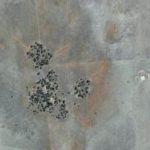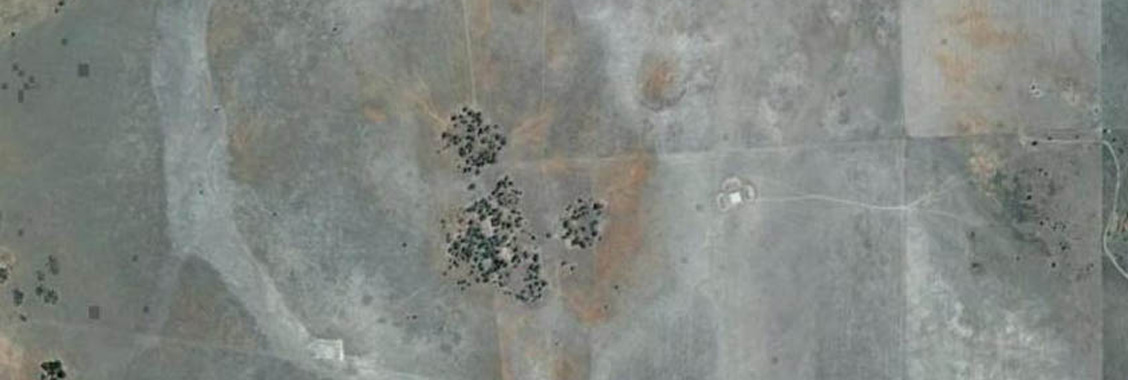Facts & Resources
EM surveys: Sometimes “cheap” is just too expensive

Did You Know?
Precision Agriculture (PA) provides a broad range of powerful and valuable tools for farmers and their advisers. Highlights include precise guidance of farm machinery to minimise compaction (CTF) and maps of: 1) during season crop performance, 2) grain yield and profitability, and 3) surface elevation mapping.
But some PA components are less useful and require great caution. Many Australian farmers – particularly dryland grain producers –hire advisers who use inexpensive eye-catching electromagnetic induction (EM) map patterns to naively decide where soil sampling should take place. This PA information is then used to define zones with specific soil improvement recommendations.
Unfortunately there often is a foolish assumption that all of the key soil factors requiring consideration – including dispersion/sodicity, pH imbalance and compaction severity – will correlate strongly with EM data and change across paddocks in synchrony with each other.
Evidence in the GRDC Dispersive Soil Manual clearly shows that often this is not the case: https://grdc.com.au/resources-and-publications/all-publications/publications/2023/dispersive-soil-manual
CSIRO, in their ‘Guidelines for Surveying Soil and Land Resources’ (2008, p. 275), have noted that EM signals are affected by clay content, salinity (electrical conductivity; EC) and water content of soil profiles, and that: “… total reliance on EM survey as a surrogate for soil survey is unwise, as even a rudimentary understanding of the technique and insight into natural soil variation will show.”
There are specific circumstances where EM can work well because of a genuinely strong correlation between EM signals and a single soil factor of interest:
- Where there is a sampling location in a paddock known to be saline, EM surveys are valuable for mapping the boundaries of the problem area.
- In the NSW Riverina, leaky zones within rice fields usually have a lower clay content and a lower degree of salinity than nearby heavy clay areas, so zone boundaries can be mapped accurately using EM maps.
- In the cotton industry, EM surveys highlight zones with sandy/gravelly subsoil that need to be avoided when planning the location of water storages.
- Western Australian soil scientists have indicated that ‘depth to clay’ can be predicted by EM where deep mixing is under consideration to overcome water repellence problems in sandy topsoil.
But many situations exist where EM surveys can cost farmers dearly. Uneven rainfall (eg. heavy rain from a storm occurring in a narrow strip across a wheat paddock) and runoff inflows can complicate EM map interpretation, and often there are crop growth factors that are unrelated to soil constraints but affect residual soil moisture, eg. frost damage and uneven weed/pest pressures.
Soil factors of relevance to grain growers usually each have their own separate and distinctive patterns of variation across paddocks. Therefore, it is close to impossible for a single remote sensing system such as EM to accurately map each of the key soil factors (dispersion, acidity, compaction, water holding capacity etc) simultaneously where a comprehensive suite of topsoil and subsoil factors requires evaluation.
Where only a small degree of correlation does exist, for example, between EM data and sodicity (and the associated issues of dispersion and the ‘electrochemical stability index’; ESI) for a particular paddock, the sodicity predictions from EM will be too inaccurate to be useful for mapping and amelioration planning at that location. Images of bare soil colour collected via a drone or satellite can be more useful for dispersion mapping – and the planning of gypsum/lime/organics application – than EM maps, but direct soil sampling and analysis via a flexible grid approach (~1 pit per 5ha) will deliver the best accuracy.
The cost to farmers of a failed EM-based soil assessment is twofold:
- The expense of the EM survey itself and associated attempts at interpretation, and;
- The value of ongoing lost grain production and unnecessary inputs associated with a failure to accurately assess and then professionally manage all relevant soil constraints.
‘Yield gap’ maps show that many Australian grain producers suffer large financial losses because of yield shortfalls which almost certainly are related to inaccurate assessment and poor management of their soil constraints. The losses tend to be most severe in wet years when waterlogging is a major constraint for crop production. The blend of EM surveys and ‘0-10 cm soil nutrient testing’ that is used by farmers and their advisers in some regions to guide soil management decisions clearly is inadequate.
Farm advisors without thorough training in soil science run the risk of being accused of malpractice if their clients lose money because of incorrect planning of soil assessment and management. Therefore advisors having only a clear understanding of PRECISION AGRICULTURE ENGINEERING and AGRONOMY, for example, need to team up with an accredited soil scientist who has a wealth of experience and knowledge about PEDOLOGY and SOIL AMELIORATION. This way, farmers will get the best possible value for the consulting fees that they pay.
In conclusion, it is dangerous to rely exclusively on EM maps to define where to collect soil samples across crop or pasture paddocks. Pit and core locations for comprehensive soil assessment should instead be guided mainly by farmer observations, grain yield maps, geology maps, and aerial images showing bare soil colour (if available) and during-season vigour of crops/pastures/trees.
An alternative more direct approach is to commence soil assessment for the planning of root-zone improvements by collecting topsoil, subsurface and subsoil samples on a flexible grid (spacing of about 400 metres; away from the main CTF wheel tracks) in at least the three most important paddocks on a farm. Analyse the soil samples then produce maps of soil structural condition, pH, salinity, organic carbon, nutrients etc. for the topsoil, subsurface and subsoil. Use remote sensing data to fill in the spatial gaps where strong correlations exist. The soil factor maps can then be converted to maps of gypsum/lime/ decompaction/nutrient/organics requirements, in conjunction with ‘cost of repair’ and ‘expected profitability’ maps. Where there is poor correlation between environmental covariates (eg. EM and/or radiometric data) and the soil variables of interest, collect and analyse soil samples from additional cores/pits on a tighter grid spacing – eg. 100 metres apart – to achieve the required accuracy.
Once the physical, chemical and biological condition of the upper half-metre of soil has been optimised for the crops/pasture/trees of interest via amelioration, apply zone management across farms to take into account differences in features of the deep subsoil and underlying parent materials, and differences in micro-climate and groundwater/runoff dynamics associated with elevation, aspect and slope. The contrasting zones can each be given their own distinctive plant varieties and sowing dates, and bespoke fertiliser regimes, by farm managers.



